The Asset Management Plan - Phase Three was approved by Council in June 2025.
This Phase Three Plan presents the current state of all City owned assets that meet the Tangible Capital Asset (TCA) policy threshold of over $10,000 replacement value for individual assets or over $50,000 for pooled assets. The Plan is divided into sections based on the eight major asset classes: Transportation, Drinking Water, Wastewater, Stormwater, Facilities, Fleet and Machinery, Equipment, and Land Improvements.
The Asset Management Plan offers leaders and the public a comprehensive picture of the condition of the City’s infrastructure, supporting better-informed decisions about where tax dollars should be spent. The Asset Management Plan is a part of the City's overall Asset Management Program designed to enable the management of infrastructure assets in a way that connects strategic community objectives to day-to-day decisons relating to when, why, and how investments are made.
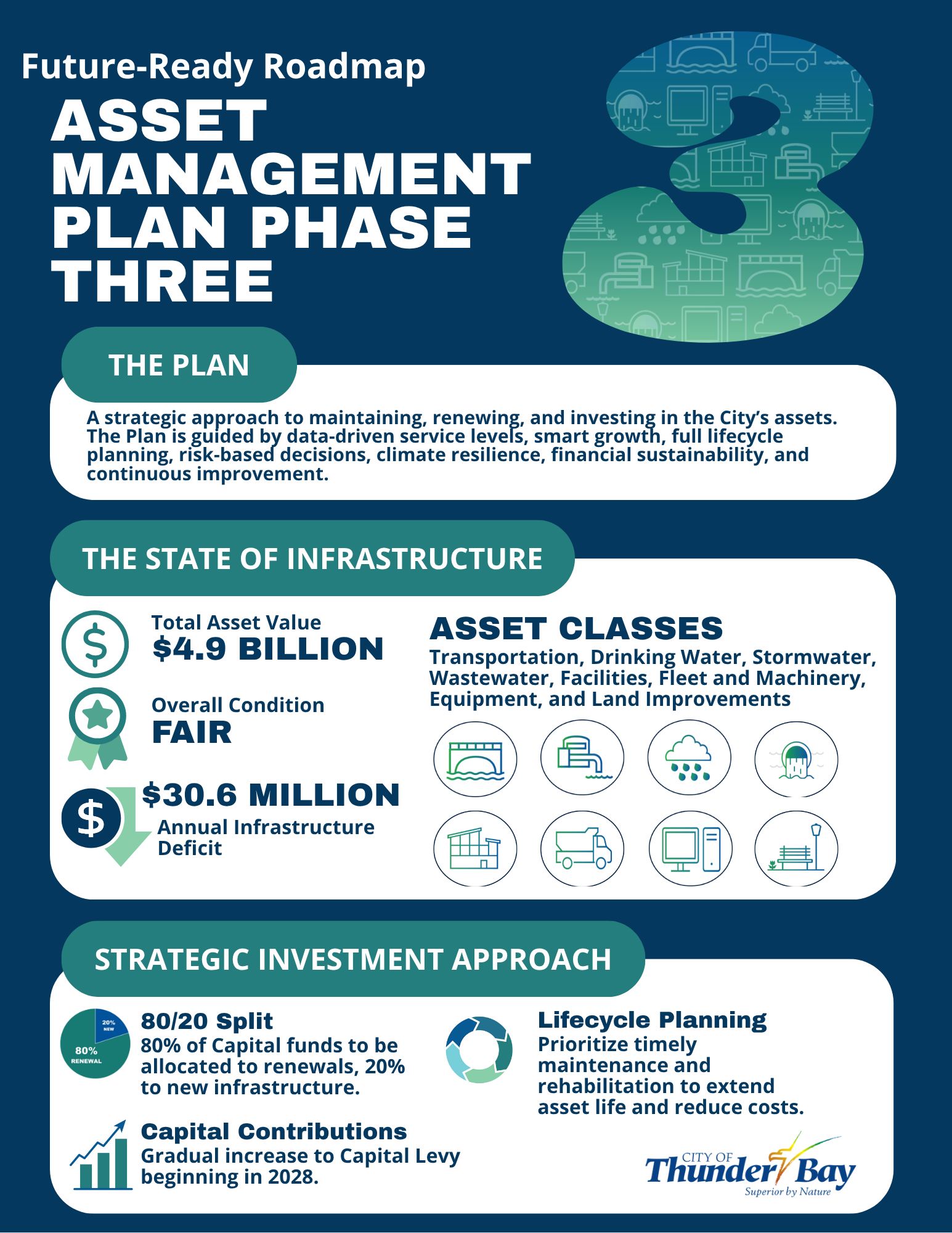
Click through the asset classes below to find out more information about the assets in those classes:
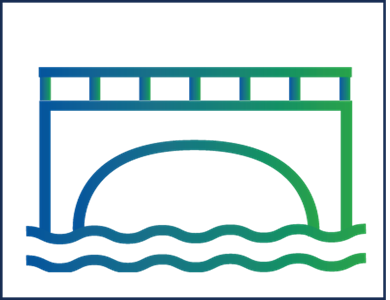 Transportation Transportation |
|
Residents and visitors use our transportation system to commute to work, bike to get groceries, drive to visit friends and family or to access destinations such as Prince Arthur’s Landing. Transportation Assets help the City to provide services to its residents such as emergency services, public transit, and solid waste collection. The continuity of transportation in the City relies on well maintained and functioning assets. Transportation assets have a total replacement value of $1,761,676,000. The City of Thunder Bay’s Transportation Assets includes roads, bridges, culverts, sidewalks, streetlights, and traffic signals.
Overall Condition of Transportation Assets: FAIR |
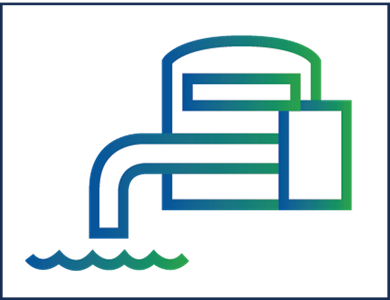 Drinking Water Drinking Water |
|
The City is committed to maintaining a safe and sustainable supply of drinking water, providing for public health protection, fire protection and support for the local economy. Drinking water assets have a total replacement value of $889,901,000. The City’s Drinking Water Network is comprised of the Bare Point Water Treatment Plant (WTP) and the distribution network. After treatment, clean safe drinking water leaves the WTP and enters the distribution network. The network has 37,877 service connections, and 726 km of watermains. Additionally, the network has seven (7) pumping stations, four (4) reservoirs, one (1) standpipe, 9,456 valves and 2,595 hydrants.
Overall Condition of Drinking Water Assets: GOOD |
 Stormwater Stormwater |
|
The City of Thunder Bay’s stormwater assets manage the runoff of rain and melted snow that flows overland into catchbasins, ditches, streams, rivers and lakes. Stormwater is soaked up like a sponge in natural landscapes, which then nourishes plants and slowly replenishes streams, lakes, wetlands and aquifers. In more urban areas, impervious or hard surfaces such as asphalt, concrete and rooftops prevent stormwater from naturally soaking into the ground. Stormwater assets have a total replacement value of $374,936,000. The City of Thunder Bay’s stormwater assets include 345 km of storm sewers, 486 km of ditches, three (3)stormwater retention ponds, more than 11,000 catch basins, 6,062 manholes, two (2) dams, 28 green infrastructure facilities, 39 oil-grit separators, and 373 outlets to receiving waters.
Overall Condition of Stormwater Assets: FAIR |
 Wastewater Wastewater |
|
The City of Thunder Bay’s wastewater network is comprised of the Atlantic Avenue Water Pollution Control Plant (WPCP) and the sanitary sewer network. The WPCP provides service to over 108,000 people and has a rated capacity to treat 84.5 million litres per day. Wastewater assets have a total replacement value of $708,267,000. The wastewater network includes the WPCP, four (4) lift stations, 34,969 service connections, and 526 kilometers of sanitary sewers.
Overall Condition of Wastewater Assets: FAIR |
|
|
|
The City of Thunder Bay owns and operates a vast array of diverse buildings and structures as part of its built environment that provide key services to the community, some of which include recreation, administrative, emergency services and operations. These assets support service delivery by providing safe and efficient facilities for use by staff, Council, Boards and Agencies and members of the public. The Capital Facility Construction Section of Engineering and Operations manages and maintains these assets to meet safety and regulatory requirements as well as the City’s functional requirements, in a reliable and sustainable manner. Facilities assets have a total replacement value of $727,618,000. Facility asset inventory includes 193 facilities located throughout the service delivery area of the City of Thunder Bay.
Overall Condition of Facilities Assets: FAIR |
|
|
|
The City of Thunder Bay owns and operates a vast array of vehicles and machinery which allows staff to efficiently deliver municipal services. Fleet and Machinery assets have a total replacement value of $126,336,000. The types of fleet and machinery that The City owns and maintains range from small passenger vehicles, to Transit buses, to heavy equipment for construction operations and snow removal. There are also specialized vehicles such as fire trucks, ambulances and police vehicles for emergency services. Specialized machinery such as riding lawn mowers, trailers, forklifts and ice resurfacers are also included in the City’s Fleet.
Overall Condition of Fleet and Machinery Assets: FAIR |
|
|
|
The City of Thunder Bay owns and operates a vast array of equipment which allows staff to efficiently deliver municipal services. Equipment assets have a total replacement value of $62,818,000. In order to maintain a high quality of public infrastructure and support the delivery of services the City owns several types of equipment. This includes, but is not limited to:
Overall Condition of Equipment Assets: FAIR |
|
|
|
Land Improvement assets represent a variety of asset types that serve to improve the utility and/or the enjoyment of outdoor spaces. Land Improvement assets are managed by several different departments. Land Improvement assets have a total replacement value of $253,499,000. This asset class includes parking lots, trails and walkways, play parks, sports fields, public art, fencing, docks, other siteworks such as fueling areas in public works yards and the leachate system at the landfill, as well as natural infrastructure such as trees and forests.
Overall Condition of Land Improvement Assets: FAIR |
The Future-Ready Roadmap
The Plan was developed in three phases, each with key strategic actions to comply with the Ontario Regulation 588/17: Asset Management Planning for Municipal Infrastructure under the Infrastructure for Jobs and Prosperities Act, 2015. The Future-Ready Roadmap was developed, to map out the stops needed to collect, compile, and complete key strategic actions.
The following graphics illustrates the "Steps to Develop the Asset Management Plan" For a larger version, download the "Steps to Develop the Asset Management Plan" PDF.
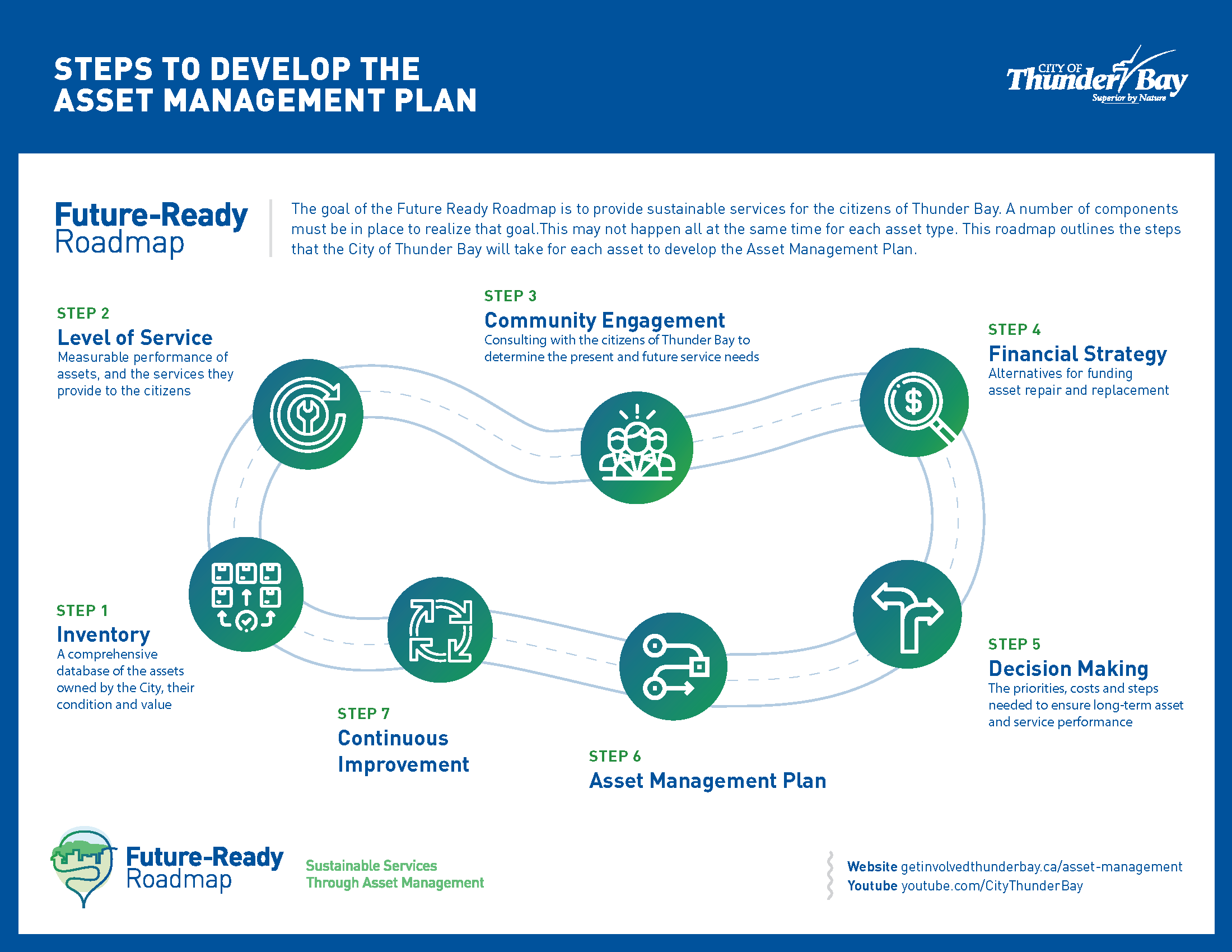
Background
In May 2024 City Council approved the Asset Management Plan: Phase Two presented with Report 134-2024 which provided information on all assets.
In December, 2023 City Council was provided with a progress update within report 321- 2023 – Municipal Mechanisms for Cost Recovery Progress Update (Infrastructure, Development & Operations – Engineering and Operations) on work to inventory municipal mechanisms the City of Thunder Bay could employ to recover and manage costs of services.
In December, 2021 Council approved Asset Management Plan: Phase One presented with report R.167.2021 Asset Management Plan: Phase One (Infrastructure and Operations) which provided information on core assets.
In February, 2019, Council approved a Strategic Asset Management Policy in accordance with Ontario Regulation 588/17.
On January 1, 2018 Ontario Regulation 588/17 Asset Management Planning for Municipal Infrastructure came into effect under the Infrastructure for Jobs and Prosperity Act, 2015.
Version 3 of the City’s Asset Management Plan was published in January 2017 with Report 3/2017 (Corporate Services & Long Term Care – Financial Services) and included all asset categories.
On June 5, 2017 Council passed a resolution recommending that the City of Thunder Bay participate in FCM’s Climate and Asset Management Network to develop an asset management policy, strategy and governance framework to align with the City’s Climate Adaptation Strategy and other social, economic and environmental sustainability goals.
In 2016, Council adopted the 2016 Asset Management Plan presented with Report No. 3.2017 which included paved roads, bridges, sidewalks, traffic signals, streetlights, water, sanitary, storm, facilities, and fleet.
In July, 2005, Council adopted the 2005 Asset Management Plan presented with Report No. 2005.173 Asset Management Plan (Transportation & Works) which included paved roads, bridges, sidewalks, traffic signals, streetlights, water, sanitary, storm, facilities, and fleet.
Contact Us







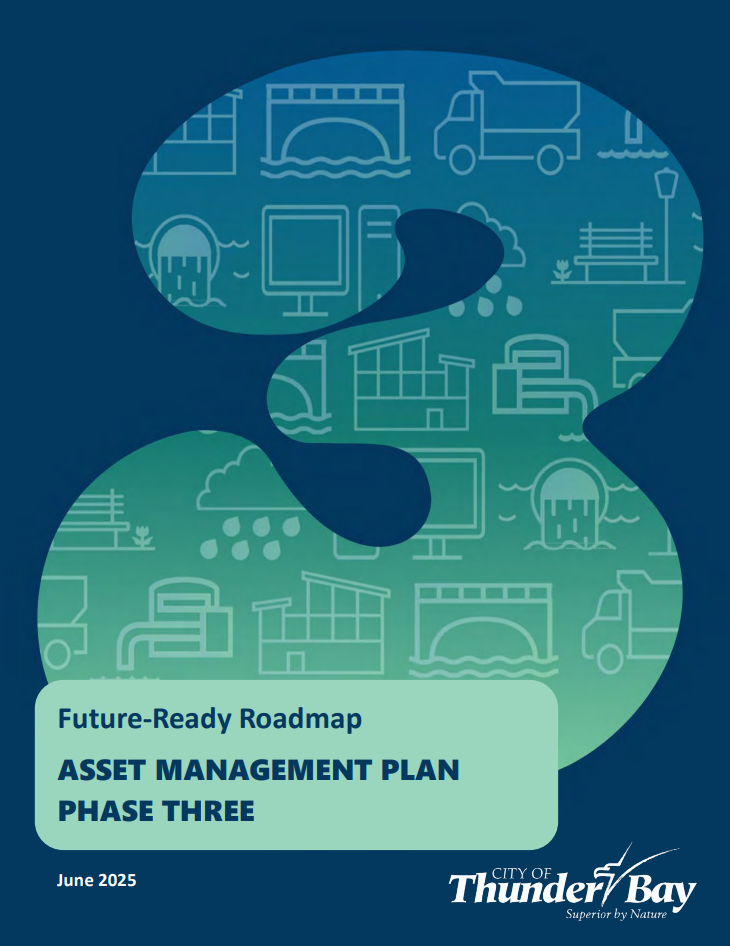
 Facilities
Facilities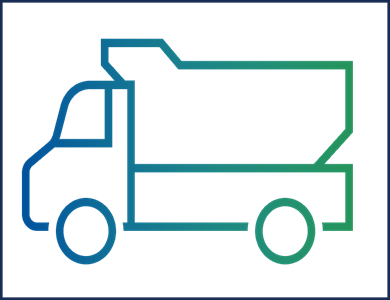 Fleet and Machinery
Fleet and Machinery Equipment
Equipment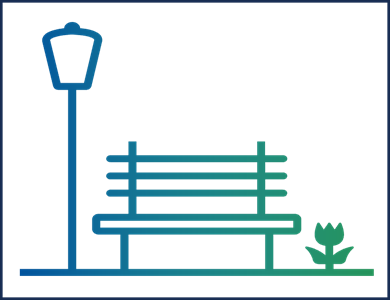 Land Improvements
Land Improvements
